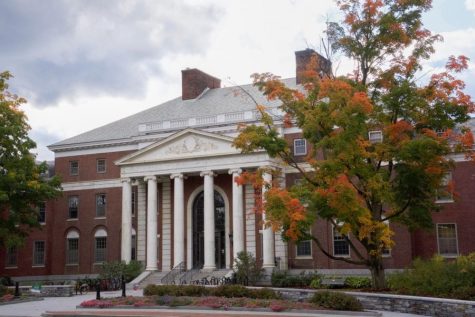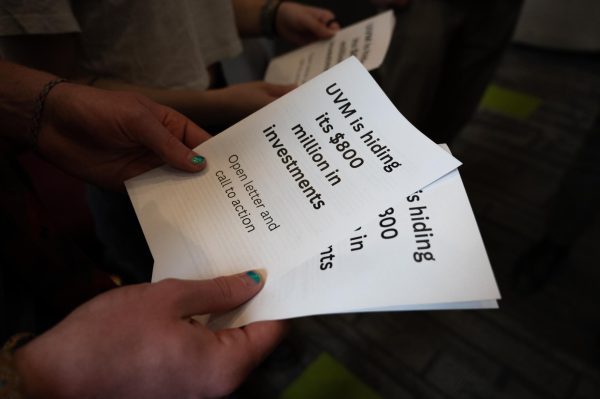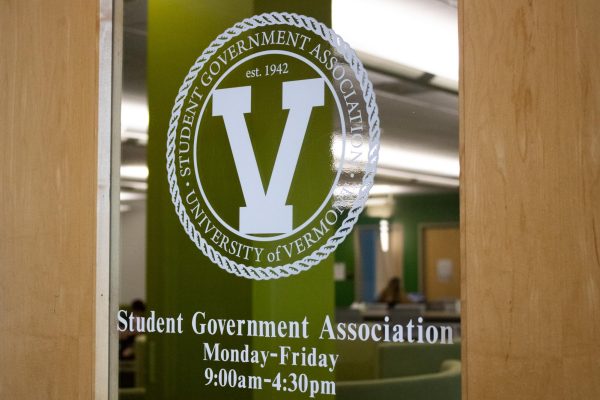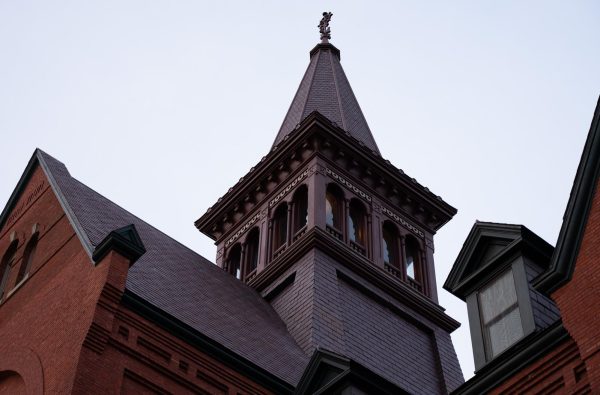Stolen UVM rhino horn could be headed for black market, officials say
May 12, 2017
The University can’t figure out who stole the rhinoceros horn.
UVM police services and the U.S. Fish and Wildlife Service are offering a total of $3,000 for the horn’s return and the thief’s identity, said Tim Bilodeau, deputy chief of UVM police.
Biology department staff noticed the horn was missing from Torrey Hall at about 2 p.m. April 27, stated Jeff Wakefield, assistant director for news and public affairs, in a May 4 email to the Cynic.
Evidence that the thief used a power drill to enter was found at the scene, according to the email.
UVM police are leading the investigation with additional support from the U.S. Fish and Wildlife Service, Bilodeau said.
“Certainly we want to reclaim the item and hold those who stole it accountable,” Bilodeau said.
The horn, which was stolen from a locked room, is likely headed for the international black market, he said.
“There’s a culture in alternative medicine where black rhino horns are seen as an aphrodisiac or a cure for cancer,” biology professor Bill Kilpatrick said. “The horn has real value on the black market if the thief can get it to Asia.”
Kilpatrick is the vertebrate curator for the Zadock Thompson Natural History Collections, where the University’s horn was stored.
His department is unsure what the horn is worth because of missing paperwork, but it is likely around $100,000. The thief is likely to get that much for it, Kilpatrick said.
“It has to be sold to different people to get it to Asia,” he said. “Those people are only going to get the big bucks once the horn iss ground up into a fine powder and sold in medicinal doses.”
Species often become endangered because people who need money see poaching and the illegal animal trade as a way to get by, said sophomore Maria Kerchner, an animal science major.
“If this was sold into the black market for medicinal purposes,” Kerchner said, “it’s important to focus on why people are put in the position of feeling their only way to make money is to sell animal products on the black market.”
The horn was acquired by the Fleming Museum at the turn of the 20th century and transferred to the Torrey collection in the 1980s, Kilpatrick said.
The collection, which houses around 300,000 specimens, is used for research and is not open to the public, he said.
Though the stolen horn has not yet been used for research, it has potential to be used in conservation efforts, Kilpatrick said.
These historical specimens contain important genetic material that, when paired with modern engineering, can help save the species, he said.
There are heated debates about the ethics of reviving extinct or near-extinct animals through genetic engineering, said junior Ethan Loo, microbiology student and lab technician.
“There’s also some concern that the species may not be truly extinct, and creating an artificial version may be deleterious to any naturally remaining individuals,” Loo said.















